External links
- Johan de Wit, Onedit issue 14.
- Johan de Wit, Intercapillary Space.
- ↑ Jebb, K. Poetry Salzburg Review No. 16, Autumn 2009.
Johan de Wit (born 1944) is a contemporary expatriate Dutch poet. He is the author of as many as twenty publications. His first collection, Rose Poems, was published by Actual Size in 1986. Up To You Munro by Veer Books appeared in 2008. Reality Street published his Gero Nimo in 2011. Kenya (Veer) was published in 2016 (with Antony John and Wayne Clements).
He has been described as one of the most innovative poets writing in English in the past twenty years. [1]

Andrew Marvell was an English metaphysical poet, satirist and politician who sat in the House of Commons at various times between 1659 and 1678. During the Commonwealth period he was a colleague and friend of John Milton. His poems range from the love-song "To His Coy Mistress", to evocations of an aristocratic country house and garden in "Upon Appleton House" and "The Garden", the political address "An Horatian Ode upon Cromwell's Return from Ireland", and the later personal and political satires "Flecknoe" and "The Character of Holland".
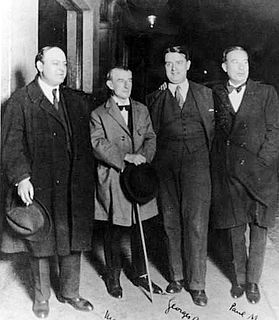
Léon-Paul Fargue was a French poet and essayist.
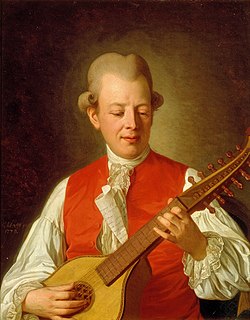
Carl Michael Bellman was a Swedish songwriter, composer, musician, poet and entertainer. He is a central figure in the Swedish song tradition and remains a powerful influence in Swedish music, as well as in Scandinavian literature, to this day. He has been compared to Shakespeare, Beethoven, Mozart, and Hogarth, but his gift, using elegantly rococo classical references in comic contrast to sordid drinking and prostitution—at once regretted and celebrated in song—is unique.
This article contains information about the literary events and publications of 1592.

John Lyly was an English writer, dramatist, courtier, and parliamentarian, best known during his lifetime for his two books Euphues: The Anatomy of Wit (1578) and its sequel Euphues and His England (1580), but perhaps best remembered now for his plays. Lyly's distinctive and much imitated literary style, named after the title character of his two books, is known as euphuism.
Gaius Licinius Macer Calvus was an orator and poet of ancient Rome.

Sophus Christian Frederik Schandorph, known simply as Sophus Schandorph,, Danish poet and novelist, was born at Ringsted in Zealand. He was one of the men of "the Modern Break-through".

Johan Olof Wallin,, was a Swedish minister, orator, poet and later Church of Sweden Archbishop of Uppsala, Sweden between 1837-1839. He is most remembered today for his hymns.

Martin Codax or Martim Codax was a Galician medieval joglar - possibly from Vigo, Galicia in present-day Spain. He may have been active during the middle of the thirteenth century, judging from scriptological analysis. He is one of only two out of a total of 88 authors of cantigas d'amigo who used only the archaic strophic form aaB. He employed an archaic rhyme-system whereby i~o / a~o were used in alternating strophes. In addition Martin Codax consistently utilised a strict parallelistic technique known as leixa-pren. There is no documentary biographical information concerning the poet, dating the work at present remains based on theoretical analysis of the text.
Ffra Johan Basset was a Catalan author of twenty verses and a prose Letovari. His work is preserved in the Cançoner Vega-Aguiló (1420–30). He was probably active in the early years (1416–21) of the reign of Alfonso V. His religious title, fra ("brother"), has led to speculation that he was a knight of the Order of Saint John of Jerusalem. Johan preached at Cervera during Lent in 1424. It is recorded that he was a member of the "Order of Santa Anna". This is probably a reference to the convent of Santa Anna at Barcelona, which was originally a house of the Order of the Holy Sepulchre under the guidance of the Patriarch of Jerusalem. Cohabitating at Santa Anna was a group of Brothers of Penitence and some Augustinian canons of Santa Eulàlia del Camp. In 1420 the friars and canons passed into the Casa del Sant Sepulcre de Santa Anna.
Nationality words link to articles with information on the nation's poetry or literature.
Nationality words link to articles with information on the nation's poetry or literature.
De Wit or de Wit is a surname of Dutch origin meaning "the white (one)", thought to be generally a reference to blond hair. In 2007, 24,904 people had this name in Netherlands alone, making it the 21st most common name in that country. Variant forms are De With, De Witt, De Witte and, especially in North America, DeWitt. People with the name include:
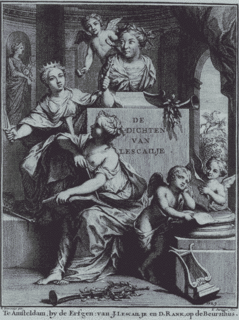
Katharyne Lescailje or Catharina Lescaille was a Dutch poet, translator and Publisher. Along with Catharina Questiers and Cornelia van der Veer she was the most successful female Dutch poet of the second half of the 17th century.
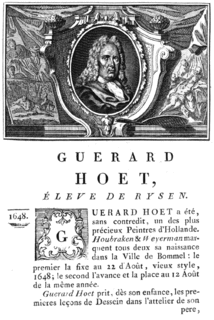
Gerard Hoet was a Dutch Golden Age painter and engraver.
Daijiro Morohoshi is a Japanese manga artist. He grew up in Adachi-ku, Tokyo. He is well known for SF comics, allegorical comics and horror/mystery comics based on pseudohistory and folklore. The indirect influence by Cthulhu Mythos also appears here and there in his works.

Lorenzo Hammarsköld was a Swedish critic and literary historian. He also published poetry.
Johannes Narssius was a Dutch physician and Neo-Latin poet, initially a Remonstrant minister.
Wayne Clements is a contemporary British artist and poet. His books include, From, A Country Diary, Kenya , Lives of the Saints (Red Ceilings, 2016), Variant Lines and Other Poems (Red Ceilings, 2013), Archeus, Western Philosophy, Clerical Work, History of the Russian Revolution, Vertical Stepping and Depressions Strokes. He holds a PhD in Fine Art from Chelsea College of Art and Design. He has exhibited his new media artworks internationally. In 2006 he won the Award of Distinction for Net Vision at Ars Electronica for un_wiki.
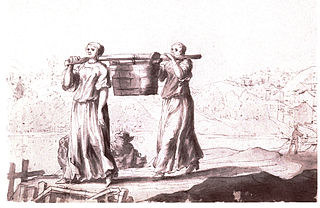
Events from the year 1674 in Sweden